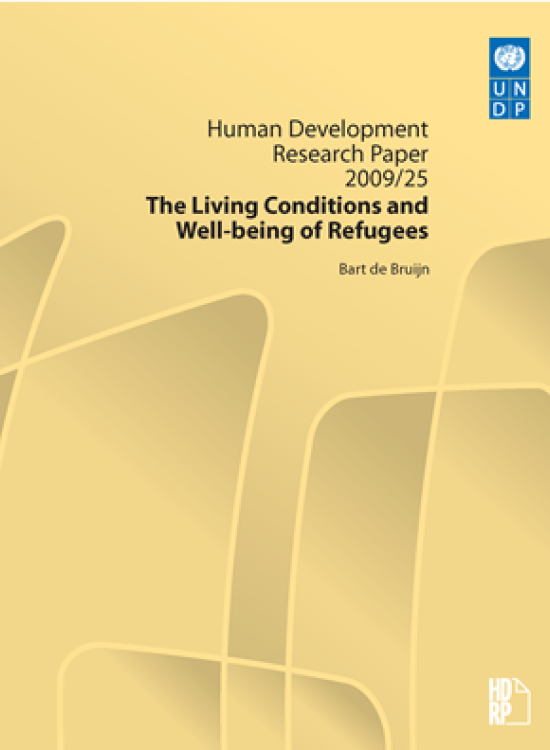The Living Conditions and Well-being of Refugees

Download Report by Language
Document
hdrp200925.pdf
(602.25 KB)
Citation
De Bruijn, Bart. 2009. The Living Conditions and Well-being of Refugees. New York.
The Living Conditions and Well-being of Refugees
Posted on: January 01, 2009
In the study of international mobility, refugees make up a very specific population. In contrast to most migrants, forcibly displaced persons have little opportunity for expanding livelihoods, and are usually faced with realities that deny them a dignified life and fulfilment of their capabilities. In many situations, people who left their homes to escape from persecution, armed conflict or violence face restrictive policies of the countries in which they found refuge and become critically dependent on humanitarian assistance. This paper describes living conditions and wellbeing of refugees – and more particularly camp-based refugees – in six countries with protracted refugee conditions: Tanzania, Uganda and Kenya in Africa, and Nepal, Bangladesh and Thailand in Asia. It primarily draws on UNHCR’s ‘Standards and Indicators’ data. Thematic areas covered in the paper include legal protection, gender-related issues, food security and nutritional status, health, education, and refugee livelihoods and coping strategies. The assessment of refugees’ living conditions proceeds along two different perspectives. The first is a gap analysis based on UNHCR standards, which are largely in line with SPHERE standards. The second is a comparison of refugees’ living conditions with those of host populations in the country of asylum and with those of populations on the country of origin. The available data lead to the conclusion that the living conditions of refugees vary across thematic areas and are strongly contextualised, depending on a complex of social, economic, political and attitudinal factors. There is also evidence that despite often grim conditions, at times the targeted efforts of humanitarian assistance and own coping strategies produce situations for refugees that are relatively better than that of the local hosting communities or the population in the region of origin.